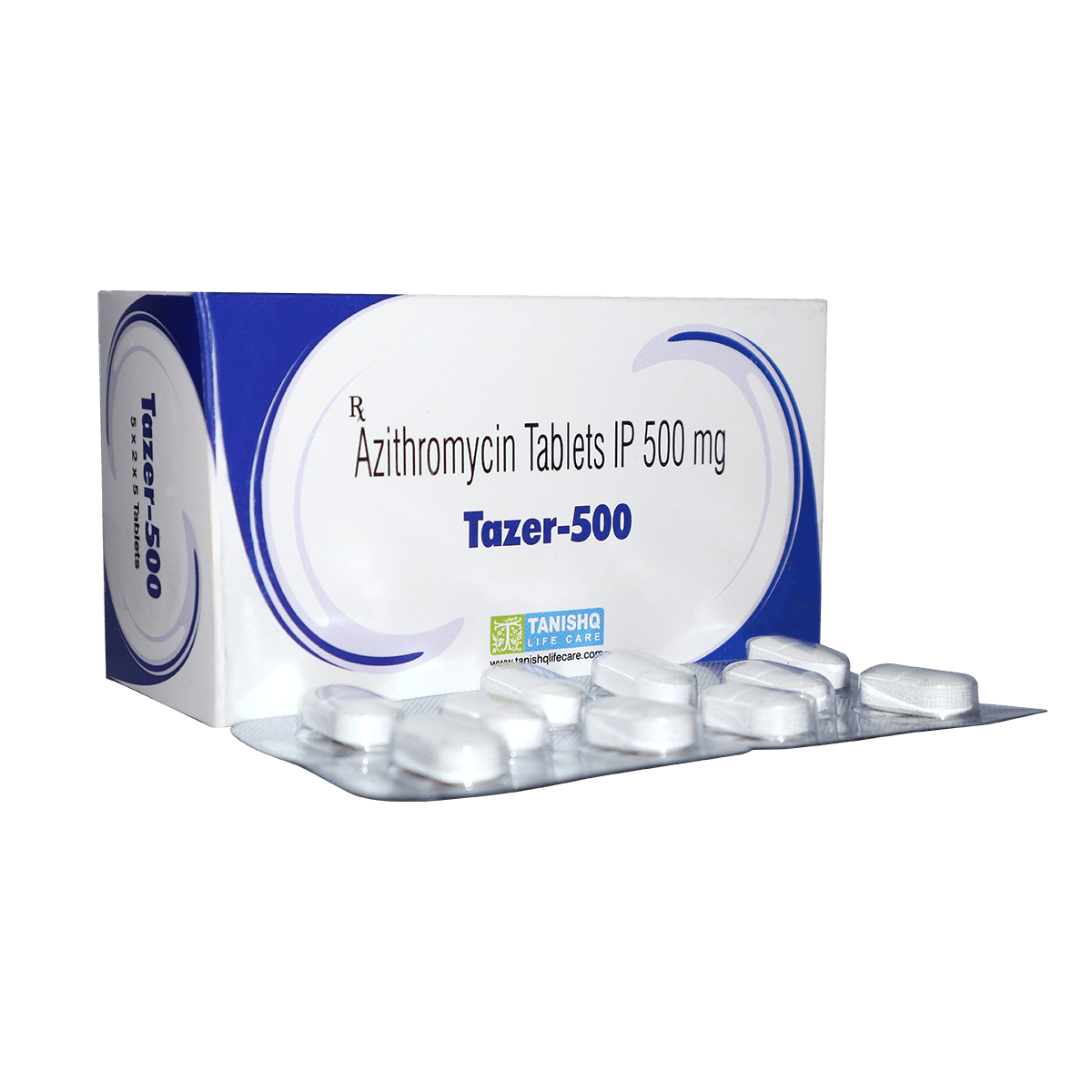
Tazer 500
Azithromycin is a macrolide antibiotic used to treat a wide range of bacterial infections. It works by inhibiting the growth of bacteria, preventing them from producing proteins necessary for their survival. Azithromycin has a broad spectrum of activity, making it effective against both gram-positive and gram-negative bacteria, as well as some atypical bacteria.
- Recommended Usage
Indications
- Bacterial Infections: Urinary Tract Infections (UTIs), Respiratory infections (e.g., pneumonia), Skin and Soft Tissue Infections, and Gastrointestinal infections.
Dosage and Administration
500 mg once daily for 3 to 5 days depending on the type of infection.
Dosage is adjusted based on weight, with liquid formulations often preferred in younger children.
Precautions
Allergic Reactions: Azithromycin should not be used if you are allergic to azithromycin or other macrolide antibiotics like erythromycin.
Heart Conditions: Azithromycin may cause QT prolongation (a heart rhythm disorder), so it should be used with caution in patients with heart disease, arrhythmias, or electrolyte imbalances (e.g., low potassium or magnesium levels).
Liver and Kidney Impairment: Use cautiously in patients with liver or kidney problems, as the drug may need dose adjustments.
Pregnancy and Breastfeeding: Azithromycin is generally considered safe during pregnancy, but use it only when necessary. Consult a healthcare provider before breastfeeding.
Drug Interactions: Azithromycin may interact with certain drugs, such as antacids, blood thinners (e.g., warfarin), or certain antifungals. Always inform your healthcare provider about other medications you are taking.
Diarrhea: If you experience severe diarrhea, it could be a sign of Clostridium difficile infection (CDI), which requires immediate medical attention.
Benefits
Azithromycin is effective against a wide variety of bacteria, including gram-positive and gram-negative bacteria, atypical pathogens, and some protozoa.
Azithromycin is taken once daily, making it easy to follow the prescribed regimen and improving patient adherence to the treatment.
Its long half-life means that it remains active in the body for an extended period, allowing for shorter treatment durations (often 3-5 days) compared to other antibiotics.
Product Category
- Anti Infective
- Injectables
- Pre Filled Syringe
- Immunosuppressants
- Anti Ulcerant/ppis
- Joint Care
- Enzymes
- Heamatinic Agents
- Antioxidant Multivitamins
- Laxatives
- Anti Alergic
- Corticosteroids & Combinations
- Anti Fungal
- Medicated Soaps
- Emollients and Moisturisers
- Face Care
- Puva & Sun Protectors
- Hair Care
- Anti Acne Preparation
- Analgesics Antipyretics & Anti Inflammatory
- Anti Spasmodic & Anti Emetic
- Expectorants Antitussives & Mucolytics
- Antidiarrheals
- Cardiac Drugs
- Antipsychotics
- Anti Epileptics
- Migraine
- Anti Dyspetic
